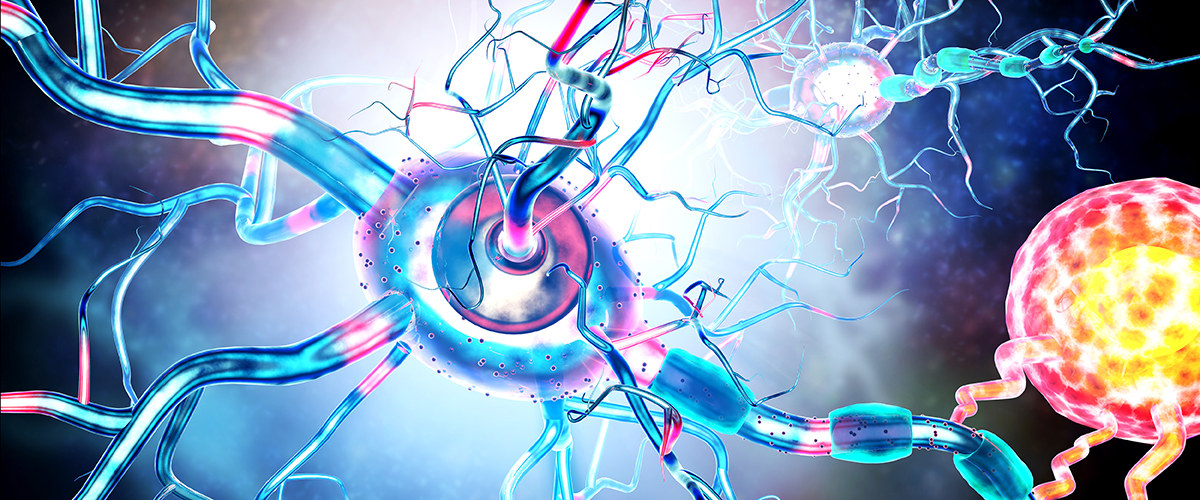[vc_row][vc_column][vc_column_text]
In a preclinical study, investigators found evidence that THC induces mitochondrial biogenesis to slow the progression of Parkinson’s disease.
A major cannabinoid found in cannabis – Δ9-tetrahydrocannabinol (THC) – may inhibit the progression of Parkinson’s disease by encouraging mitochondrial function, according to a study published in Oncotarget. Researchers from Plymouth University Peninsula Schools of Medicine and Dentistry examined the neuroprotective properties of THC on human neuroblastoma SH-SY5Y cell models.
Parkinson’s disease is a progressive nervous system disorder caused by the dysfunction and eventual death of dopaminergic neurons. The drop in dopamine, a neurotransmitter that regulates movement, leads to motor control problems. Scientists are still unsure as to what stimulates the death of dopamine-generating cells, but do know that oxidative injury, excitotoxicity, glial activation, and mitochondrial dysfunction are physiologically responsible for the decline in neuron health.
This new study suggests that THC offers neuroprotection by eliciting a chemical reaction that restores mitochondrial content. This response is related to the cannabinoid’s interaction with proliferator-activated receptor γ (PPARγ), also known as the glitazone receptor. These receptors are responsible for regulating fatty acid storage and glucose metabolism. PPARγ agonists, like THC, induce mitochondrial biogenesis.
The researchers found that THC offered greater neuroprotection than pioglitazone, a known agonist of the PPARγ that has been found to offer neuroprotective benefits in both animal and cell culture studies on Parkinson’s disease. THC induced mitochondrial biogenesis to actually reverse deficits, while pioglitazone did not.
The neuroprotective effects offered by THC and pioglitazone, the study found, are elicited through different pathways. Combining the two was found to offer an even greater protective effect, suggesting the two compounds act synergistically to further reduce neuronol death.
“Our data indicate that rather than reducing oxidative stress by PPARγ-regulated expression… THC induces PPARγ-mediated mitochondrial biogenesis whilst pioglitazone, whose protective effect is most likely only partially driven by PPARγ, does not. Indeed our data suggest that Δ9-THC can add to the neuroprotective effect of pioglitazone,” the researchers conclude.
Most studies investigating the neuroprotective effects of PPARγ agonists have been attributed to an anti-inflammatory response and a drop in oxidative stress. This study suggests that activation of the receptor can also help in the inhibition of Parkinson’s disease by regulating the synthesis of mitochondria.
“THC is generally well tolerated by [Parkinson’s disease] patients and may therefore represent an alternative worthy of consideration,” the researchers added. “Furthermore, the ability of Δ9-THC to induce mitochondrial biogenesis is interesting as decreased mitochondrial content has been associated with familial as well as sporadic cases of [Parkinson’s disease].”
Parkinson’s disease is the second most common neurodegenerative disease with a predicted prevalence of about 9 million people worldwide by 2030. While there are dopamine replacement therapies that help manage motor dysfunction symptoms, there are no current treatments that effectively inhibit the progression of the disorder.
The entire study, “Delta-9-tetrahydrocannabinol protects against MPP+ toxicity in SH-SY5Y cells by restoring proteins involved in mitochondrial biogenesis,” is available through the National Center for Biotechnology Information.
Visit our education page to read through the research findings in previous studies on cannabis and Parkinson’s disease. Keep up with the latest cannabis research through our news feed.[/vc_column_text][/vc_column][/vc_row]






